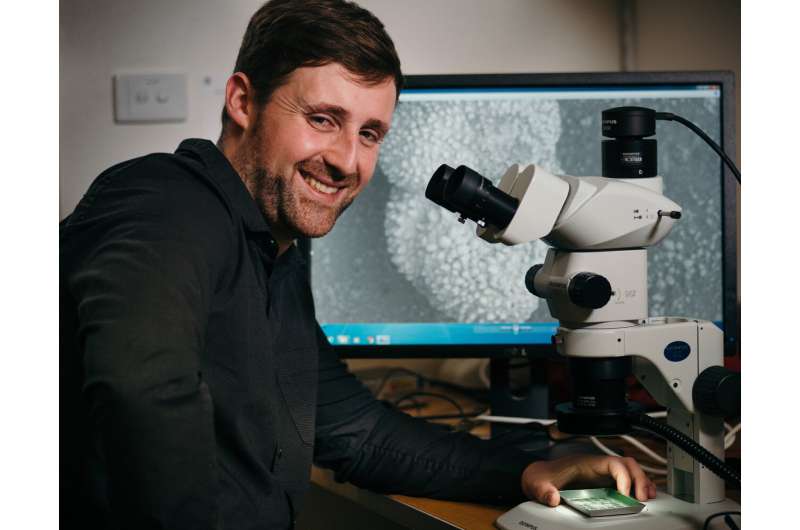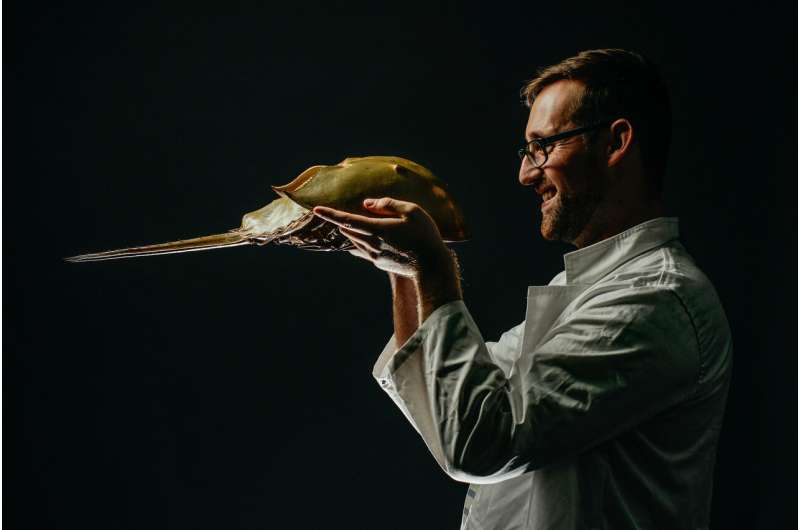A prehistory of blindness

Fossils that had gone unstudied since the early 20thcentury helped a team led by University of New England (UNE) palaeontologist Dr Russell Bicknell to address a long-standing puzzle: were ancestors of the iconic horseshoe crab blind?
Examining fossil specimens housed within the New York State Museum and comparing them to other fossils from Australia, Bolivia, Canada, China, England, and the USA allowed Dr Bicknell and colleagues from the Museum and Harvard to determine that about 60 per cent of fossil horseshoe crab species showed no evidence of eyes.
Some of these fossils were collected as far back as 1865. Since these specimens were gathered in the 19th Century, the lack of evidence of eyes had persuaded generations of palaeontologists that the ancestors of modern horseshoe crabs were blind.
"We effectively ground-truthed that assumption, and found that to a degree, these statements were correct," Dr Bicknell said. "What those early investigators didn't have, and we did, was a more complete record of fossil horseshoe crabs."
"That record allowed us to compare fossil specimens spread across time and space. As such, we could more thoroughly assess prehistoric horseshoe crab vision."
The confirmation that some horseshoe crab ancestors were blind suggests that these fossil species lost sight because they had no real use for it, Dr Bicknell observed – perhaps because they lived in low light environments.

"But the fact that modern day horseshoe crabs have eyes and vision, albeit limited, indicates that blind forms did not survive changes to their environment that made their lost sense valuable again."
Horseshoe crabs have persisted since just after Cambrian Explosion—the great diversification of marine life that occurred about 500 million years ago—and survived five mass extinction events, even the great extinction that wiped out the dinosaurs.
However, Dr Bicknell is not convinced these ancient animals will survive the current wave of human-caused extinctions.
The Chinese horseshoe crab is now listed on the IUCN Red List of Threatened Species, and Dr Bicknell is involved in continued research to have the iconic American horseshoe crab also classified as threatened.
"It would be an indictment on humanity if this animal, which has persisted for 500 million years and basically outlived everything else, was finally made extinct by us," he said.
More information: Russell D C Bicknell et al. New insights into the evolution of lateral compound eyes in Palaeozoic horseshoe crabs, Zoological Journal of the Linnean Society (2019). DOI: 10.1093/zoolinnean/zlz065
Provided by University of New England



















